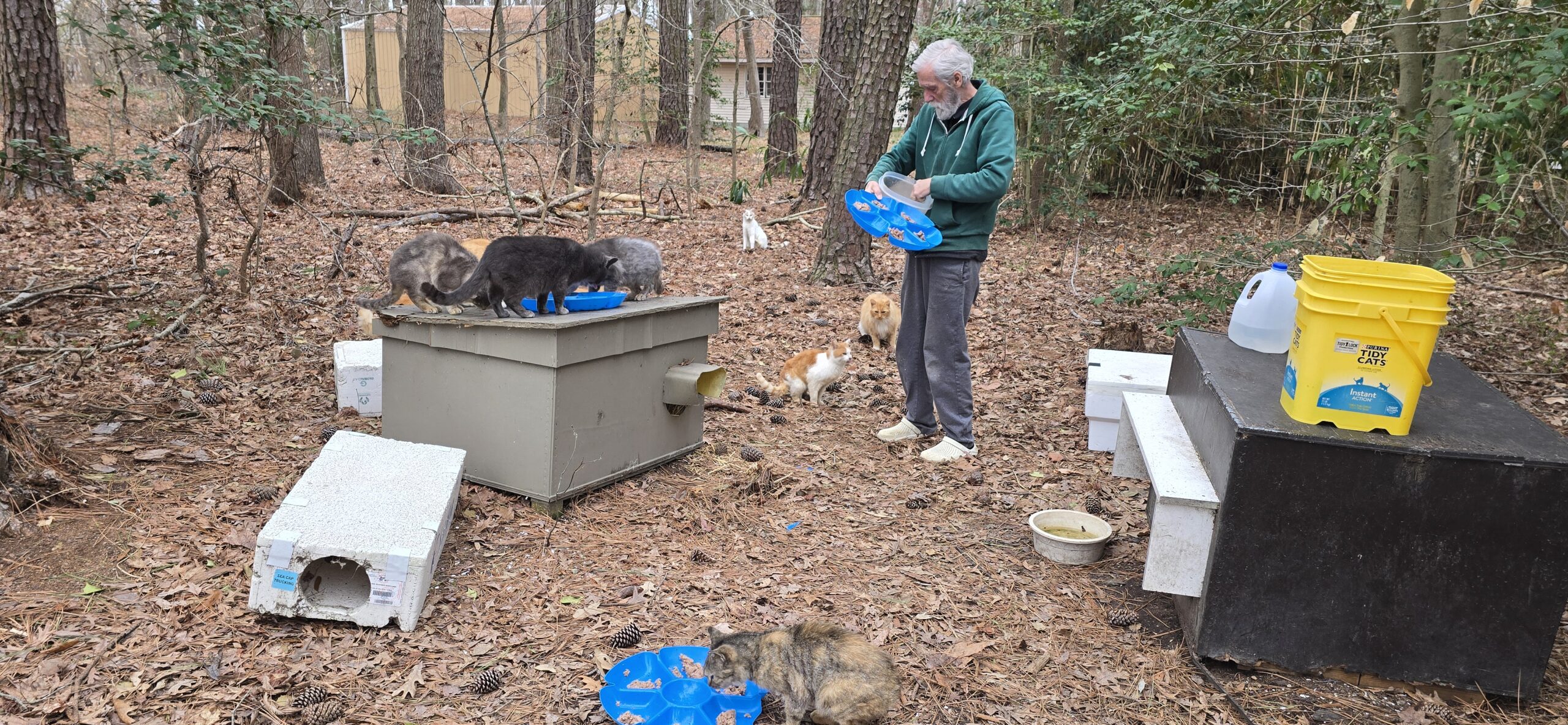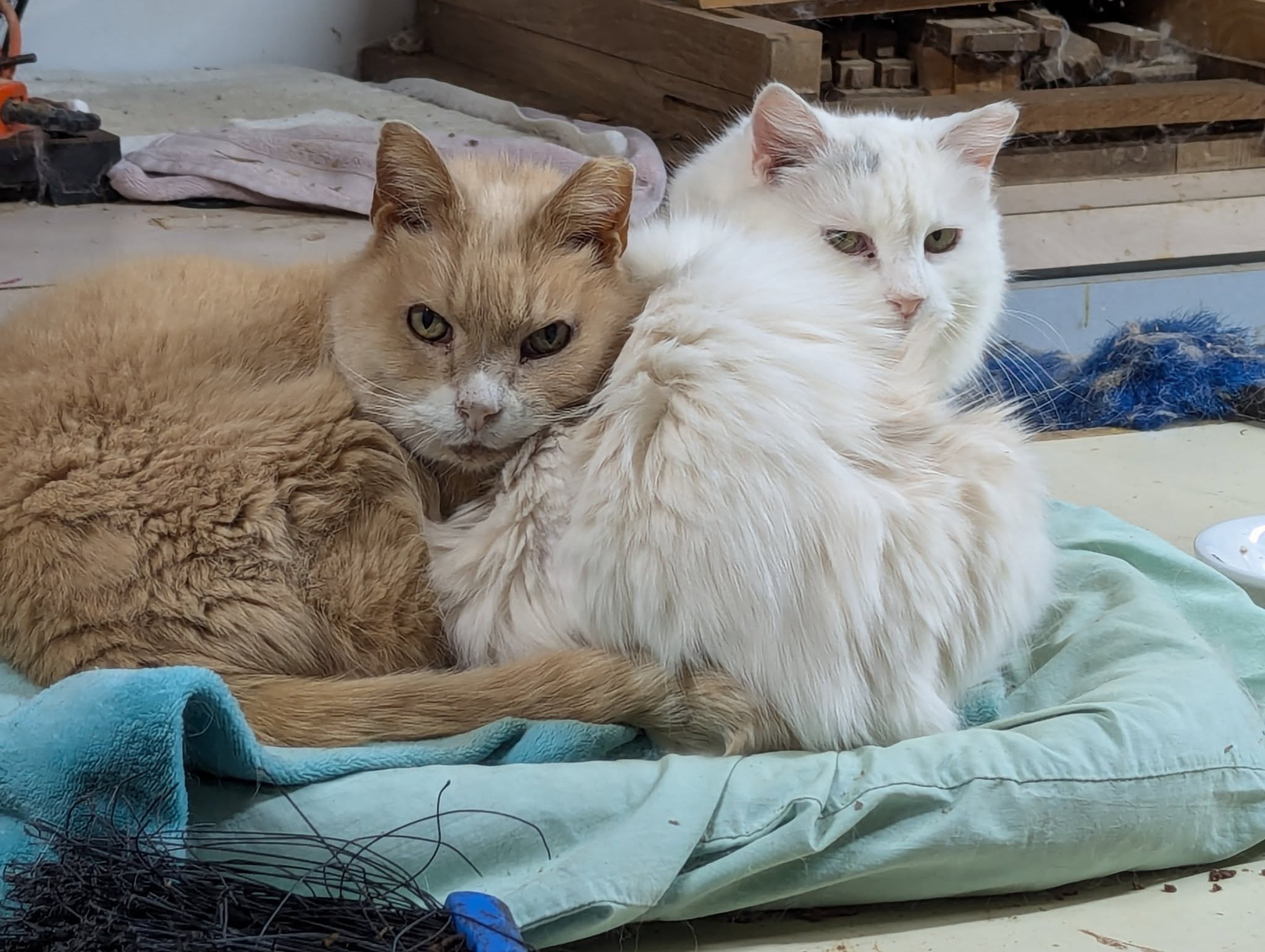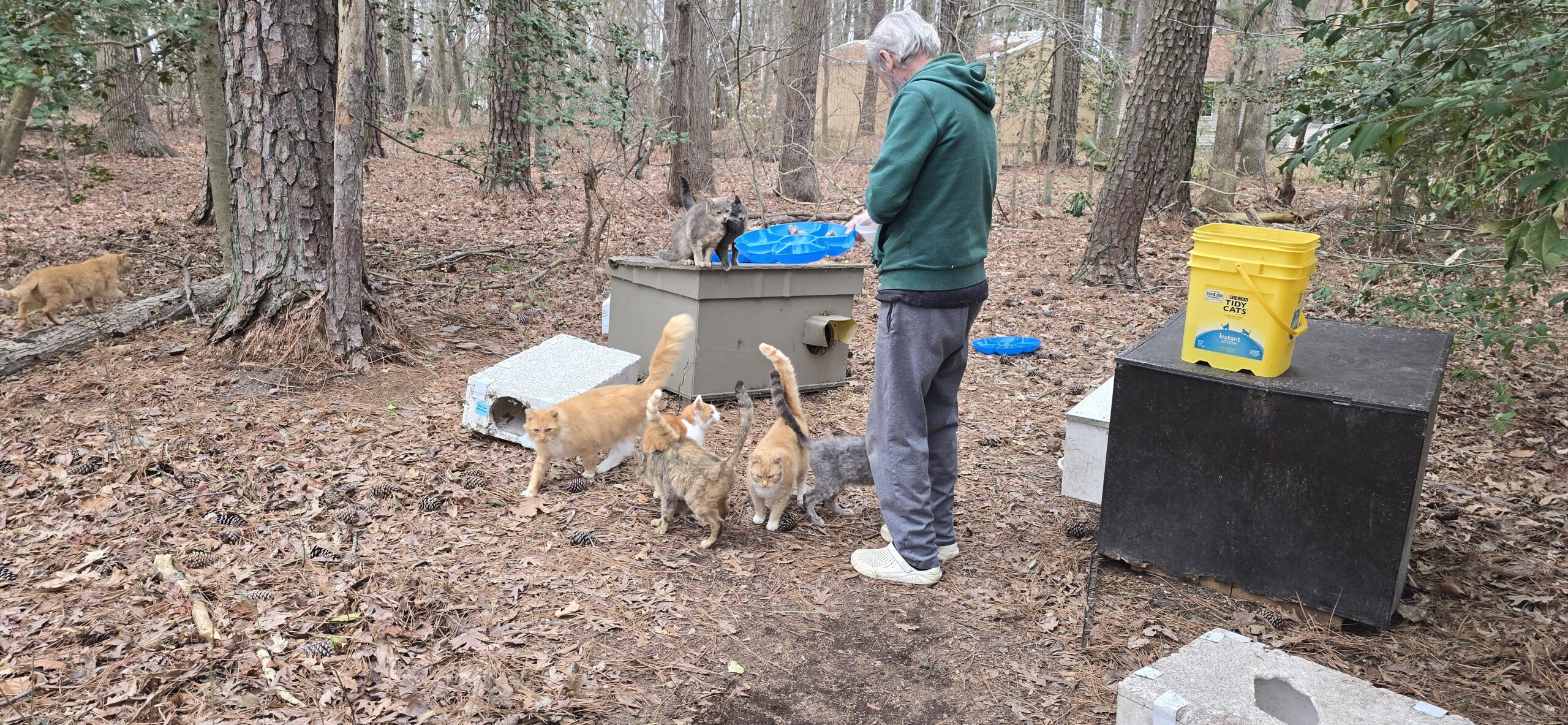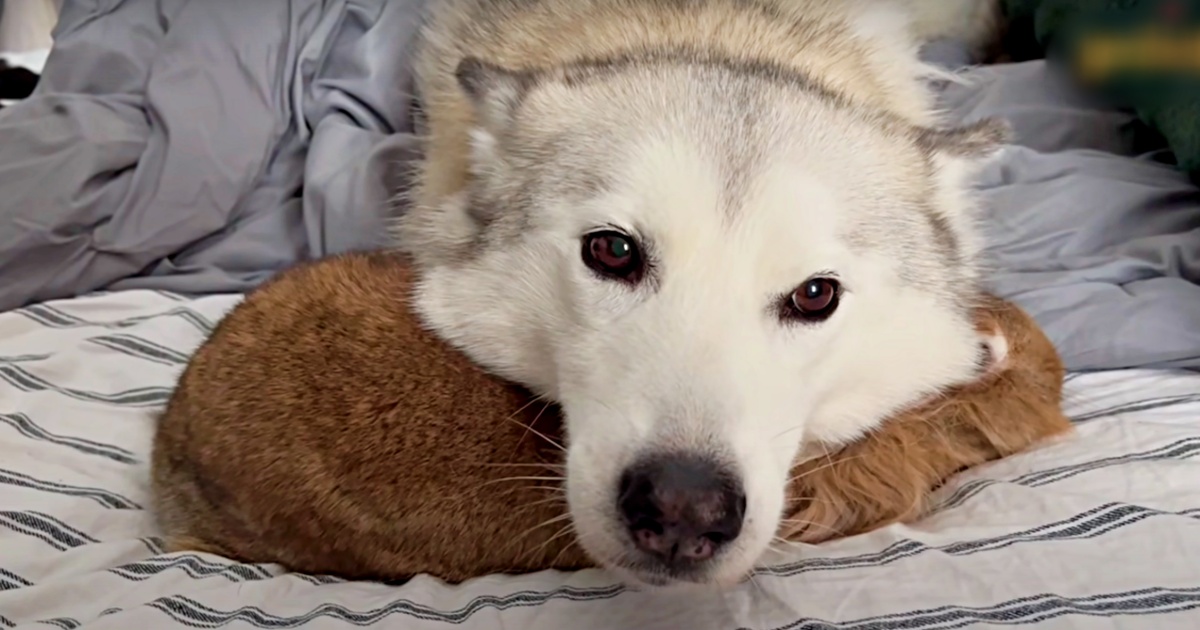
“Want to help me feed some cats?” As an animal lover, there was only one answer: “Hell, yeah!”
And that’s how I ended up standing next to Tom Ryan—a man whose very name feels like he was destined to run Tom Cat Solution, a feral cat rescue organization.
It was a chilly morning when we arrived at one of the colonies. We had to do so quietly as the cats knew the sound of his car and came running from all directions to greet him. “It’s like being the Pied Piper,” he said. “I’m sure people look at me and wonder why I’ve got six or eight cats wrapped around my ankles.”
He introduced them to me, calling them by name and describing their personalities, bending down to give those brave enough a pet on the head. “This is Mark,” he pointed. “He’s one of our senior ones.” “Are you being a good girl?” he asked another, as she rubbed against his ankles.
While feeding them, Tom talked about how this particular colony had, at one time, approximately 55 cats, now down to 13. After spending some time with them and saying goodbye, we moved on to a smaller colony, where only one beautiful black cat was brave or hungry enough to come out with a stranger in their midst.

As we drove, I had to know: has he always done this? Tom laughed. Not quite. He is actually a retired aeronautic engineer. But for the past decade, his mission has been all about saving lives—specifically, the lives of thousands of feral cats across the Eastern Shore. His impact? He’s facilitated the care of over 8,500 cats (and counting) and has been responsible for the spay/neuter of over 5300 cats. His daily routine? A never-ending cycle of feeding, trapping, neutering, returning (TNR), rehoming, and, when needed, providing sanctuary to the cats who have no one else.
But Tom isn’t just rescuing cats—he’s built a lifeline for them. Alongside his wife, Terry (a veterinarian), and a small but dedicated group of volunteers, he has created a system that ensures feral cats survive and are genuinely cared for.
Founded in 2010, Tom Cat Solution was born not from a grand plan but out of sheer necessity.” When Talbot Humane shut down its TNR program, it left an entire community of feral cats without help. Tom, with a passionate group of volunteers, refused to let that happen. So, they took action, and what started as a response to bureaucratic decisions soon transformed into a full-fledged rescue mission.

But it’s not just a commitment to the cats that keeps him going. One promise he made years ago still stays with him. It was to an older man who had spent years feeding a colony before he passed away. “I told him I’d take care of them, he said, “And that’s what I do, every single day.” That promise isn’t just a sentimental gesture—it’s a way of life.
Today, Tom Cat Solution manages multiple cat colonies where feral cats have made their home for years. Running the organization means that vacations and sicknesses are a luxury Tom simply can’t afford. Every single day, without fail, he makes his rounds—feeding and checking on the colonies, coordinating medical care, responding to frantic calls from people overwhelmed by unexpected litters or strays that show up under their porches, setting up cameras, setting up traps, looking for lost cats, or finding homes for those that can be socialized. The work is too important, and the responsibility is too heavy. Even if he wanted to step away, who would take his place?
Not that his work is free from debate. TNR is a controversial method of controlling the feral cat population. Conservationists argue that outdoor cats threaten local birds and small mammal species. Tom understands the concern, but he’s quick to shift the conversation to the real issue:
“These cats didn’t just appear,” he said. “They’re here because people didn’t spay or neuter their pets. They moved away and left them behind. And now, we’re just trying to manage the damage already done.” To him, TNR is the most humane solution—preventing suffering while minimizing long-term environmental impact.
The results speak for themselves, and colony populations have steadily declined. Unfortunately, over time, the number of volunteers has also dwindled—one emotionally exhausted, others forced to step away due to moving out of the area, age, or health reasons. That leaves a very small handful of people to do the work. “It’s exhausting,” Tom said, “but necessary. Many of these cats wouldn’t stand a chance if we weren’t here.”
Beyond exhaustive, it can also be heartbreaking. Some cases haunt him, but they also fuel his resolve. He talked about Maurice, the ‘big daddy of the Talbot Trailer Park’ who was left behind when the Park closed down. “I searched for him for days,” Tom said. “When he finally showed up, he walked up and pressed against me. He was ready to leave.” Tom took him home, and in his final weeks, Maurice knew warmth, comfort, and love again—no longer forced to fight for survival. It’s moments like that—moments when a cat recognizes that someone finally cares—that keep Tom going.
Despite the incredible work Tom and his volunteers do, keeping Tom Cat Solution running is a huge financial drain. The organization survives largely on endowments and private donations. One generous contribution from a late friend of Terry’s and another recent large donation have helped create an endowment that will hopefully sustain them for a bit more.
Still, the day-to-day costs remain staggering. Tom estimates they spend at least $1,000 on cat food every month. This does not include medical expenses like spay/neuter surgeries, dental work, and emergency care. “When you know you can help those who are in pain, you realize you just have to make it work.”
However, for Tom, the biggest challenge is the future.
“I could be dead in five years,” he said bluntly. “Terry can’t do this on her own. We will have to pull people in and find someone who can pick up the charter for what Tom Cat is doing. The endowment should last at a certain level for a long time, but who will do the work?”
He’s already seen the problem firsthand. The core volunteers are aging and younger people, while willing to help in small ways, rarely want to take on the grueling work. “I’ve had people ask, ‘Can I help?’ And I say, ‘Well, can you get up at two in the morning to trap cats?’ And suddenly, that’s not what they meant,” Tom said. “Maybe they’ll scoop litter boxes, which is great, but we need more than that.”
Because of this commitment, many see Tom as a hero. But for him, it isn’t about glory—it’s about responsibility. “I made a commitment,” he said. “And once you commit, you follow through.” It’s a philosophy that has shaped his life—first as an aerospace engineer and now as a relentless cat rescuer. His mind is always calculating, problem-solving, and looking for the most effective way forward.
And to Tom, the solution is simple: Keep going. Keep feeding. Keep fixing. Keep saving.
For Tom, there has never been another option.
Please go here for more information http://www.tomcatsolutionsonline.org





